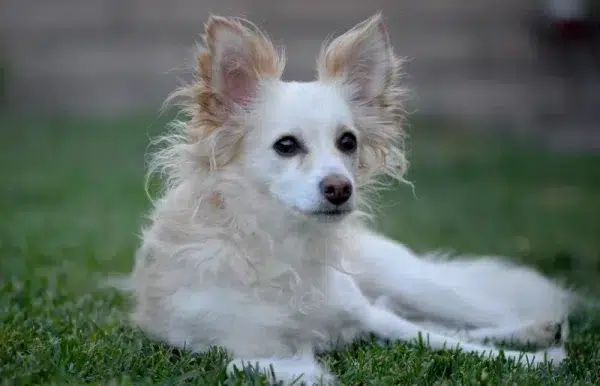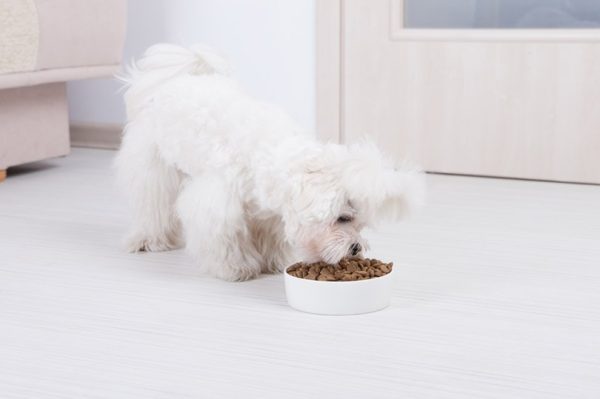In this article
The first thing most of us learn about raising a dog is that chocolate is harmful, regardless of the format. As tasty as it may be for us on a hot day, chocolate ice cream is one treat that dogs should never eat.
How bad is this popular frozen dairy dessert? Let’s find out as we explore the science behind whether dogs can eat chocolate ice cream.

Why Can’t Dogs Eat Chocolate Ice Cream?
Like any other form of chocolate, chocolate ice cream is toxic to dogs due to the methylxanthines (theobromine and caffeine) contained therein. Containing 2%–4% cocoa solids, chocolate in ice cream isn’t as dangerous as other variations of chocolate, like milk chocolate bars that contain at least 10% cocoa and more concerningly dark chocolate up to 95%.
The milk and cream that head the ingredients list in chocolate ice cream recipes help dilute some of the cocoa powder’s influence, though that doesn’t make it much safer for your dog. On the contrary, these dairy products can cause additional immediate health problems.

Theobromine and Caffeine
Theobromine and caffeine are the central issues when we say that dogs can’t eat chocolate, whether in ice cream or any other form. Both are methylxanthines (a group of stimulants) that appear in cocoa, and theobromine levels are three to ten times higher than caffeine.
The total amount of these methylxanthines is a crucial measure, as the two work competitively to affect the body in similar ways. The methylxanthine concentration can vary based on the individual cocoa beans, how manufacturers process the cocoa, and the type of chocolate used in the ice cream recipe.
The following are the general methylxanthine concentrations of various chocolate forms:
- Dry cocoa powder: 28.5 mg/g
- Unsweetened (baker’s) chocolate: 16 mg/g
- Semisweet and dark chocolate: 5.4–5.7 mg/g
- Milk chocolate: 2.3 mg/g
- White chocolate: ~0.1 mg/g
Chocolate types play a crucial role in an ice cream’s toxicity, and unsweetened and dark chocolate is more dangerous in smaller quantities. By contrast, white chocolate has a considerably lower likelihood of toxicity unless a dog eats extreme amounts.
Methylxanthine Toxicity in Chocolate Ice Cream
The exact amount of chocolate ice cream that causes toxicity varies between dogs. The lethal level of methylxanthines in cocoa is roughly 100–200 mg per kg of body weight (~45–90 mg per pound). Generally, an ounce of milk chocolate for every pound of a dog’s body weight or 0.1 ounces per pound of baking chocolate is potentially lethal.
Larger, heavier breeds can typically ingest more chocolate ice cream before showing signs of illness. At the same time, individual sensitivities, age, and health issues will make some dogs more susceptible to chocolate poisoning regardless of their size. In pregnant or nursing dogs, methylxanthines can even pass into the placenta and their milk to affect their offspring.


The Signs of Chocolate Poisoning
Initial Signs
Though it may not be deadly, methylxanthine poisoning can become apparent when dogs ingest as little as 20 mg per kg of body weight (~9 mg per pound). The GI tract absorbs and distributes the compounds throughout the body, which the liver recycles over several hours before they finally pass.
- Vomiting
- Diarrhea
- Excessive thirst
- Bloating
- Restlessness
The first signs of chocolate toxicity usually occur 4–6 hours after the dog eats chocolate ice cream. Dogs digest methylxanthines slowly, though, so it may take up to 12–24 hours before signs appear. If you have any concerns that your dog has eaten chocolate in whatever form they have come across it then you should contact your veterinarian for advice. Chocolate toxicity calculators are available to help determine a course of action.
Worsening Signs
As dogs ingest more methylxanthine (>40–50 mg/kg), theobromine and caffeine can affect the central nervous system and heart muscle. Low doses can cause a decreased heart rate, while higher amounts spur a heightened heart rate and irregular heartbeat.
- Hyperactivity
- Increased diluted urine production
- Muscular discoordination
- Tremors and seizures
- Rapid breathing
- Increased body temperature
- Coma
Death can occur in severe cases, with organ congestion, hemorrhages, or pulmonary inflammation resulting from a lethal dose.

Fat and Sugar
While the methylxanthine levels are relatively low in chocolate ice cream, the high fat and sugar content can create several other issues for dogs. Gastrointestinal upset, including diarrhea, vomiting, and abdominal pain, may occur from these alone. In excess, the fat in chocolate ice cream can cause signs of pancreatitis within 24–72 hours after a dog eats it.

How Much Chocolate Ice Cream Is Toxic to Dogs?
Toxicity typically occurs when a dog eats 0.3–0.7 ounces of milk chocolate for every pound of body weight. For a 20-pound dog, roughly 6–14 ounces of milk chocolate can cause signs of poisoning.
Since chocolate ice cream contains, at most, only 20%–40% of the cocoa levels of standard milk chocolate, even small dogs would need to eat a significant amount to get sick from the methylxanthine content. Yet, with its high-fat content and added sugar, giving your dog ice cream in any amount can still be problematic and not worth the risk.

What to Do If Your Dog Accidentally Eats Chocolate Ice Cream
Even if your dog eats a few licks of chocolate ice cream, it’s best to play it safe and monitor for signs of toxicity over the following 24 hours.
- ASPCA (consultation fee may apply)
- Pet Poison Helpline ($85 incident fee)
Alternatively, you can contact an online veterinary telehealth service for at-home advice and triage. Dogs are slow to digest and eliminate methylxanthines, causing them to linger in the system for up to 3 days.
Treatment focuses on the various signs that cause discomfort or are life-threatening until the toxic substances pass. Detoxification is a frequent solution to prevent worsening issues. Vets may need to induce vomiting or administer activated charcoal to absorb the toxins before they can enter the dog’s system.
If you need to speak with a vet but can't get to one, head over to PangoVet. It's an online service where you can talk to a vet online and get the personalized advice you need for your pet — all at an affordable price!
What Can I Give My Dog Instead of Chocolate Ice Cream?
Although it takes a significant amount of chocolate ice cream to cause poisoning, the sweet, enticing flavor makes it easy for dogs to dig in and have more than they can tolerate. As a delicious, refreshing treat, it’s unfortunate that you have to keep it out of the diet.
Luckily, pet owners can find a natural alternative that offers a similar chocolatey flavor without any methylxanthines to cause issues!
Carob is a chocolate substitute derived from the edible pods of the Mediterranean carob tree. Dog treat manufacturers often use it as a pet-safe flavoring, as it is free of caffeine and theobromine and doesn’t add fat like cocoa butter. You can buy carob ice cream and bars for dogs in pet stores or online, or you can purchase the powder to make homemade dog-friendly “chocolate” treats.


Conclusion
Between its toxic methylxanthines and high fat and sugar content, chocolate ice cream can cause numerous issues for dogs. The sweet flavor is enough to attract even the pickiest eaters, and in excess, it can go from creating minor stomach upset to becoming downright lethal.
A small taste likely won’t affect your dog, so you don’t have to fret if your dog sneaks an occasional lick. Yet, with so many pet-friendly alternatives available, owners should take the safe route and avoid letting their dogs eat chocolate ice cream in any form.
See Also:
Featured Image Credit: Xeniia X, Shutterstock



















